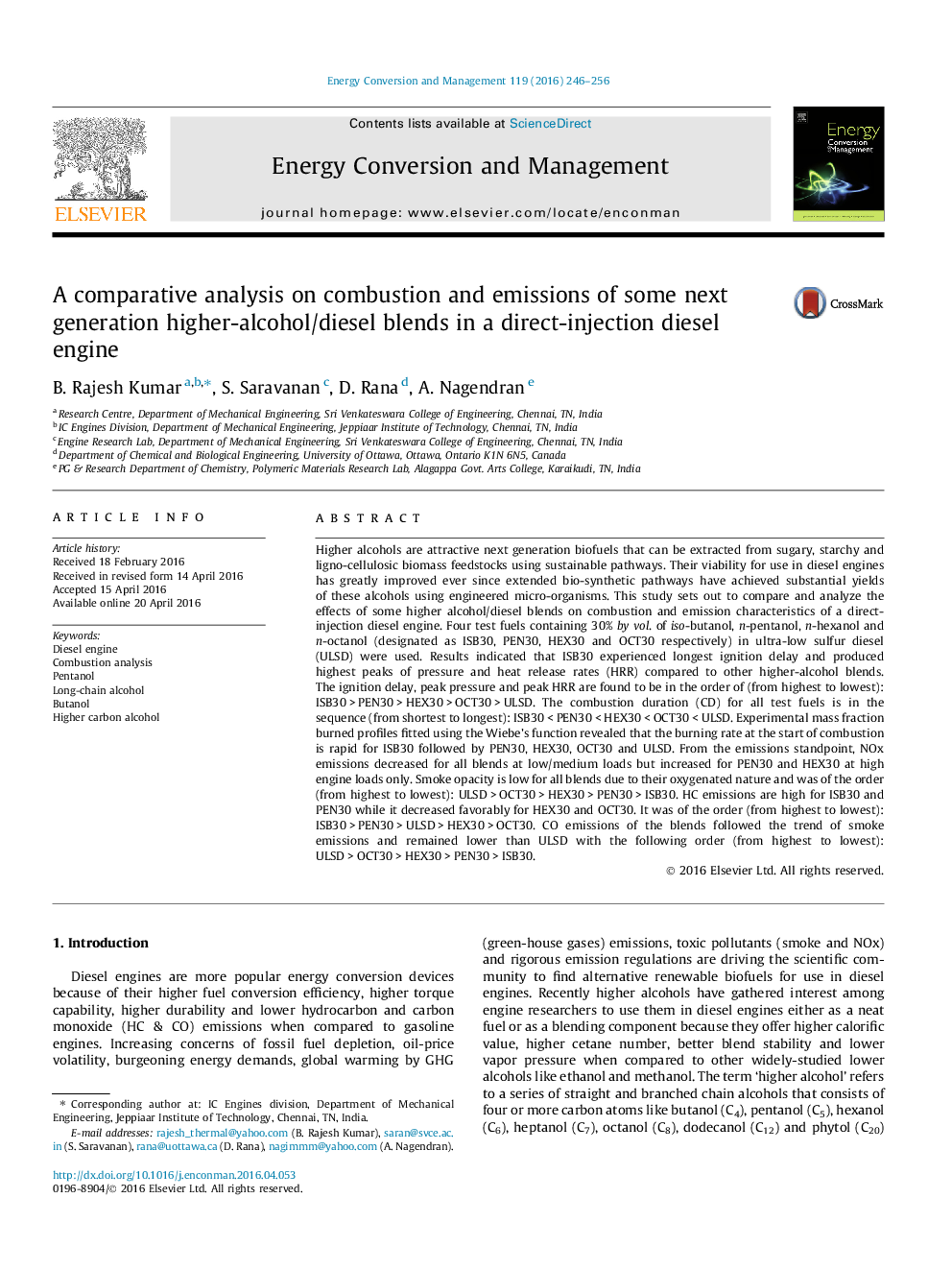| کد مقاله | کد نشریه | سال انتشار | مقاله انگلیسی | نسخه تمام متن |
|---|---|---|---|---|
| 765189 | 1462843 | 2016 | 11 صفحه PDF | دانلود رایگان |
• Four higher-alcohols namely, iso-butanol, n-pentanol, n-hexanol and n-octanol, were used.
• Iso-butanol/diesel blend presented longest ignition delay, highest peak pressures and peak heat release rates.
• NOx emissions were high for n-pentanol/diesel and n-hexanol/diesel blends at high load conditions.
• Smoke opacity is highest for n-octanol/diesel blend and lowest for iso-butanol/diesel blend.
• HC emissions are high for iso-butanol/diesel and n-pentanol/diesel blends.
Higher alcohols are attractive next generation biofuels that can be extracted from sugary, starchy and ligno-cellulosic biomass feedstocks using sustainable pathways. Their viability for use in diesel engines has greatly improved ever since extended bio-synthetic pathways have achieved substantial yields of these alcohols using engineered micro-organisms. This study sets out to compare and analyze the effects of some higher alcohol/diesel blends on combustion and emission characteristics of a direct-injection diesel engine. Four test fuels containing 30% by vol. of iso-butanol, n-pentanol, n-hexanol and n-octanol (designated as ISB30, PEN30, HEX30 and OCT30 respectively) in ultra-low sulfur diesel (ULSD) were used. Results indicated that ISB30 experienced longest ignition delay and produced highest peaks of pressure and heat release rates (HRR) compared to other higher-alcohol blends. The ignition delay, peak pressure and peak HRR are found to be in the order of (from highest to lowest): ISB30 > PEN30 > HEX30 > OCT30 > ULSD. The combustion duration (CD) for all test fuels is in the sequence (from shortest to longest): ISB30 < PEN30 < HEX30 < OCT30 < ULSD. Experimental mass fraction burned profiles fitted using the Wiebe’s function revealed that the burning rate at the start of combustion is rapid for ISB30 followed by PEN30, HEX30, OCT30 and ULSD. From the emissions standpoint, NOx emissions decreased for all blends at low/medium loads but increased for PEN30 and HEX30 at high engine loads only. Smoke opacity is low for all blends due to their oxygenated nature and was of the order (from highest to lowest): ULSD > OCT30 > HEX30 > PEN30 > ISB30. HC emissions are high for ISB30 and PEN30 while it decreased favorably for HEX30 and OCT30. It was of the order (from highest to lowest): ISB30 > PEN30 > ULSD > HEX30 > OCT30. CO emissions of the blends followed the trend of smoke emissions and remained lower than ULSD with the following order (from highest to lowest): ULSD > OCT30 > HEX30 > PEN30 > ISB30.
Figure optionsDownload as PowerPoint slide
Journal: Energy Conversion and Management - Volume 119, 1 July 2016, Pages 246–256
